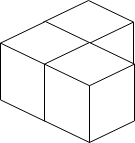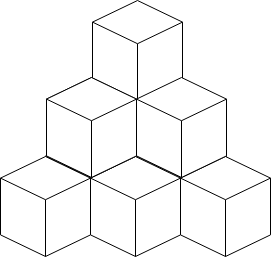You have a cubic storeroom where the width, length, and height of the room are all equal to n units. You are asked to place n boxes in this room where each box is a cube of unit side length. There are however some rules to placing the boxes:
- You can place the boxes anywhere on the floor.
- If box
xis placed on top of the boxy, then each side of the four vertical sides of the boxymust either be adjacent to another box or to a wall.
Given an integer n, return the minimum possible number of boxes touching the floor.
Example 1:
Input: n = 3 Output: 3 Explanation: The figure above is for the placement of the three boxes. These boxes are placed in the corner of the room, where the corner is on the left side.
Example 2:
Input: n = 4 Output: 3 Explanation: The figure above is for the placement of the four boxes. These boxes are placed in the corner of the room, where the corner is on the left side.
Example 3:
Input: n = 10 Output: 6 Explanation: The figure above is for the placement of the ten boxes. These boxes are placed in the corner of the room, where the corner is on the back side.
Constraints:
1 <= n <= 109
class Solution:
def minimumBoxes(self, n: int) -> int:
s, k = 0, 1
while s + k * (k + 1) // 2 <= n:
s += k * (k + 1) // 2
k += 1
k -= 1
ans = k * (k + 1) // 2
k = 1
while s < n:
ans += 1
s += k
k += 1
return ansclass Solution {
public int minimumBoxes(int n) {
int s = 0, k = 1;
while (s + k * (k + 1) / 2 <= n) {
s += k * (k + 1) / 2;
++k;
}
--k;
int ans = k * (k + 1) / 2;
k = 1;
while (s < n) {
++ans;
s += k;
++k;
}
return ans;
}
}class Solution {
public:
int minimumBoxes(int n) {
int s = 0, k = 1;
while (s + k * (k + 1) / 2 <= n) {
s += k * (k + 1) / 2;
++k;
}
--k;
int ans = k * (k + 1) / 2;
k = 1;
while (s < n) {
++ans;
s += k;
++k;
}
return ans;
}
};func minimumBoxes(n int) int {
s, k := 0, 1
for s+k*(k+1)/2 <= n {
s += k * (k + 1) / 2
k++
}
k--
ans := k * (k + 1) / 2
k = 1
for s < n {
ans++
s += k
k++
}
return ans
}


